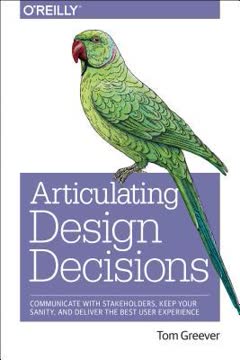Key Takeaways
1. Design thinking is crucial for creating products people love
Design is about humanizing technology or finding ways for technology to integrate into the fabric of our culture.
Embrace design thinking. This approach focuses on understanding and solving human problems, rather than solely on technological capabilities. It involves empathizing with users, defining their needs, ideating solutions, prototyping, and testing. Design thinking leads to products that resonate emotionally with users, creating a deeper connection and loyalty.
Shift from features to experiences. Instead of focusing on a list of features, consider how your product makes users feel and what it enables them to do. This perspective allows you to create products that not only function well but also provide meaningful experiences. Examples of successful products born from design thinking include:
- Nest's "learning" thermostat, described as "sexy" and "beautiful"
- Square's payment app, praised for its simplicity and attractiveness
- Airbnb's service, which transformed the hospitality industry
2. Empathy is the cornerstone of effective product management
To understand and design for this emotional appeal, it's critical not only to understand people, but to truly empathize with them in order to feel what they feel.
Develop deep empathy. Spend time with your target users, observing their behavior and listening to their stories. This goes beyond traditional market research and involves immersing yourself in their world. By truly understanding their needs, desires, and pain points, you can create products that address their deepest concerns.
Use empathy to drive decisions. When faced with product decisions, consider how each option will impact the user's experience and emotions. This empathy-driven approach helps prioritize features and design elements that truly matter to users. Techniques for building empathy include:
- Conducting ethnographic research
- Creating user personas
- Mapping customer journeys
- Role-playing user scenarios
3. Product-market fit requires understanding broad community trends
Achieving product-market fit means launching a product in a manner that gels with all of these facets.
Analyze market dynamics. Look beyond individual users to understand the broader context in which your product will exist. This includes:
- Community trends and values
- Competitive landscape
- Technological advancements
- Regulatory environment
- Economic factors
Seek market signals. Pay attention to subtle indicators of market shifts and opportunities. These can come from various sources:
- Social media conversations
- Industry publications
- Competitor actions
- User feedback and behavior
- Emerging technologies
By synthesizing these signals, you can position your product to meet evolving market needs and stay ahead of the competition.
4. Behavioral insights drive innovative product development
Behavioral insights examine how one person interacts (or wants to interact) with your product to achieve his or her goals and aspirations.
Conduct observational research. Watch users interact with your product or similar products in their natural environment. This provides insights that users themselves may not be able to articulate. Look for:
- Pain points in current processes
- Workarounds users have developed
- Emotional reactions during use
Extract meaningful insights. Analyze your observations to identify patterns and underlying needs. These insights should go beyond surface-level preferences to reveal deeper motivations and desires. Use techniques such as:
- Affinity mapping
- Journey mapping
- Root cause analysis
Transform these insights into product features and design elements that address users' latent needs and desires.
5. Emotional value proposition and product stance shape user experience
Product stance is the attitude your product takes, its personality.
Craft an emotional value proposition. Define the emotional benefit users will derive from your product. This goes beyond functional benefits to describe how users will feel after using your product. For example:
- "After using LiveWell, people will feel more connected with their body rhythms and will feel more in control of their mental health."
Develop a clear product stance. Give your product a personality that aligns with your target users' values and aspirations. This stance should inform all aspects of your product, from visual design to messaging. Consider:
- Tone of voice in user interfaces
- Visual aesthetics
- Interaction patterns
- Brand messaging
A consistent product stance creates a more engaging and memorable user experience.
6. Product vision is communicated through visual artifacts and storytelling
When you make a thing, an idea becomes real.
Create visual artifacts. Use diagrams, sketches, and prototypes to communicate your product vision. These tangible representations help align team members and stakeholders around a shared understanding. Key artifacts include:
- Product concept maps
- User journey maps
- Wireframes and mockups
- Interactive prototypes
Tell compelling stories. Use narrative techniques to bring your product vision to life. Craft scenarios that illustrate how your product will impact users' lives. This storytelling approach helps stakeholders emotionally connect with your vision and understand its potential impact.
7. Successful product launches require meticulous planning and execution
A design-driven approach to product development means caring about all the details that a human encounters when he or she uses your product, because these small details have large impacts on the experiences people have.
Create a detailed product roadmap. Map out the development process, including key milestones and dependencies. This helps align the team and manage expectations. Include:
- Feature prioritization
- Development timelines
- Resource allocation
- Launch strategy
Sweat the details. Pay attention to every aspect of the user experience, no matter how small. This includes:
- Visual design consistency
- Microcopy and error messages
- Performance optimization
- Onboarding experience
Measure and iterate. Define key metrics that reflect your emotional value proposition and product goals. Continuously monitor these metrics after launch and be prepared to iterate based on user feedback and behavior.
By following these principles, product managers can create products that not only meet functional needs but also resonate emotionally with users, leading to greater adoption, loyalty, and overall success.
Last updated:
Review Summary
Well-Designed by Jon Kolko receives mixed reviews, with an average rating of 3.92 out of 5. Many readers appreciate the book's focus on empathy in product design and management, finding it insightful for those new to the field. The practical advice and interviews with industry professionals are frequently praised. However, some criticize the book for lacking depth, being too specific to product management, or having poor translations in non-English versions. Despite these critiques, many readers find the book valuable for understanding user-centered design and product development.
Similar Books










Download PDF
Download EPUB
.epub digital book format is ideal for reading ebooks on phones, tablets, and e-readers.





